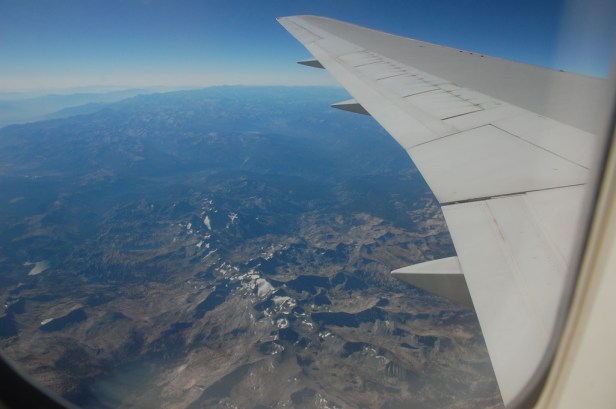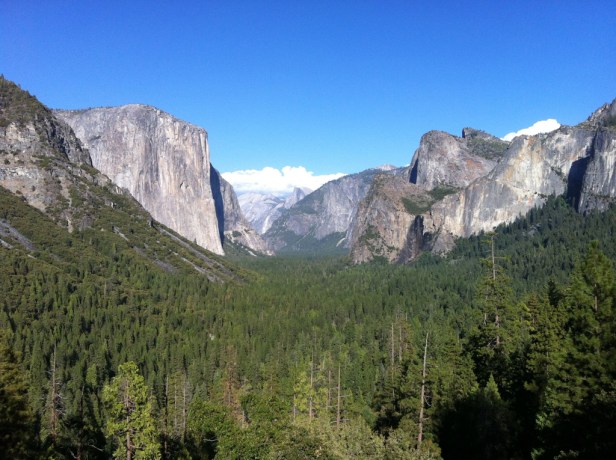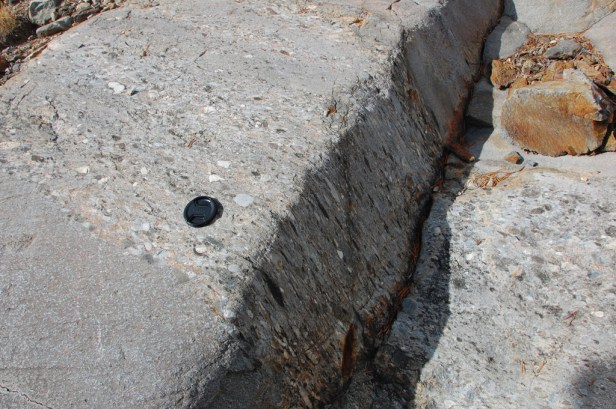The Sierra Nevada of California is one of the most fascinating geologic provinces in North America (and I’m just not saying this because I’m a petrologist). It straddles the middle third of the western margin of the continent and it captures the magmatism, tectonism and geomorphic evolution of over 200 million years. So, it makes perfect sense that geologists would have a lot to say about the region. I recently attended a Geological Society of America Field Forum that took a close look at the magmatic, structural and tectonic processes at work across the Sierra Nevada from the Paleozoic through the Cenozoic, with a focus on what is the archetypal piece of the Sierra Nevada Batholith, the Tuolumne Intrusive Complex in Yosemite National Park.

Now, I’m not going to get into the many avenues of scientific discourse that was tackled during the forum – you can imagine what happens with over 50 faculty, graduate students and undergraduates get together in the field and talk shop. Instead, I’m hoping to give you a taste of the Field Forum and why studying the Sierra Nevada is so integral to our understanding of the evolution of North America.
I’m somewhat of a new kid to studying the Sierra Nevada – I was a faculty advisor for a student on a Keck Geology Consortium project at Sequoia National Park with Jade Star Lackey (Pomona College) and Staci Loewy (University of Texas). Now, normally I study crystals from young lavas, but for this project, my student looked at old rhyolites within a pendant (a piece of crust captured in the Sierra Nevada Batholith) that turned out to be intriguing pieces of the evolving Sierra Nevada arc from a time period that is not captured in many places. My curiosity was piqued – what can we learn about the volcanic rocks caught up in the Sierra Nevada plutons that can tell us about how arc magmatism changed along the western margin of North America. So, when the forum was announced, it seemed like the perfect way to wade into the Sierra Nevada community and learn as much as I could.

The people on the forum were fascinating mix – some have been studying the Sierra Nevada for decades, some have never touched it. Some look at large-scale puzzles of the tectonics of North America, some look at microscopes inclusions of melt within crystals. Some spend most of their time interrogating the rocks in the field, while others examine the problems though intensive lab techniques. That was the point – what can bringing in all these different views do to help answer the outstanding questions in the Sierra Nevada … and identify where problems remain.

So, what are the outstanding questions in the Sierra Nevada? Well, I could write a book on that subject, but our Forum leaders focused on two key lines of inquiry: (1) how did the Sierra Nevada batholith (and prior intrusion complexes) get emplaced (in what state and at what rates) and evolve petrologically, and; (2) How did the Sierra Nevada margin change from the Triassic to the present? These questions take a multipronged assault on the geology to even scrape the surface of the complex story told by the structures and magmatism of the province.

Complex, Bob Wiebe (UC Davis) – an expert on interpreting magmatic fabrics – talks about what he seems in these mixing and mingled magmas to a group of onlookers from the Forum. These interactions are what helps make Field Forums such a great experience.
We spent much of the forum outside – actually looking at the rocks and thinking of them in the context of these key questions for the Sierra Nevada. Some of this required looking at the rocks on a regional scale, pondering where blocks of rocks many kilometers across came from (and this is usually a tricky question). Other times, we had to put our noses to the rocks to see fine-scale textures that might reveal clues to how different magmas interacted – are they solid or liquid (or both?) when they mingle? Sometimes, we got down to the crystal-scale (which can be easier than you think when you have megacrysts like you find in the Cathedral Peak Granite). Some of the places we visited were unlike anyplace I’ve even seen, places were you can envision magmas flowing, moving crystals throughout a magmatic system, producing sedimentary structures like crossbeds – but all happening in a magma. In other places, the intense metamorphic forces that some of the pendants have felt was apparent – betraying more of the complex history (dragged down to kilometers into the crust) they have felt as they were incorporated into the Sierra Nevada batholith.




Of course, the geology of the Sierra Nevada wasn’t the only exciting aspect. Sometimes, just seeing El Capitan right there in front of you is enough to take your breath away (if only for imaging being the climbers on the side of the granite face). The weather was great for much of the trip, although it didn’t stop the group from getting cozy underneath the only tree at one of our lunchstops. However, at other lunches, it was worth it to wander off a ways to get an unbridled view of the Sierra Nevada peaks around you and feel like you’re the only one for miles of this view.


Hopefully, this gives you a taste of the Field Forum. It is hard to encapsulate all the geology, all the intellectual (and less intellectual) discussions, all the wonder of spending a week in the mountains. However, it was exactly the crash course in Sierra Nevada geology that I was hoping – and I know that almost everyone I spoke with found the Forum to be well worth their time. These Forums are what make being a geologists so captivating – taking the views of the natural world and trying to deduce how they came about through the clues that are left for us. It is a tricky endeavor, but one that keeps me coming back for more.

I wanted to finish with a special thanks to the organizers of the Forum – especially the lead organizer, Scott Paterson (USC), who put together a seamless Field Forum. The other organizers were also on top of their game, whether it be for their field day or across the week – Jade Star Lackey (Pomona College), Vali Memeti (USC/Durham), Jonathan Miller (San Jose State University), Robert Miller (San Jose State Univeristy), Roland Mundil (Berkeley Geochronology Center) and Keith Putirka (Frenso State University).
Erik Klemetti is an assistant professor of Geosciences at Denison University. He also writes the blog Eruptions for Wired Science.
Hey Erik, your report brings back memories! Here’s some more photos from the field trip:
https://plus.google.com/photos/104857251909976049214/albums/5788130812849577889
Also, check out Vali’s report in this month’s GSA Today!
Beautiful pictures, Moritz! They are really some of the best. Thanks for sharing!
Hey, you ought to take up climbing. Some of the best Sierran geology is reached only by getting off the trails and on to the slopes and cliffs. I’m 69 and still climbing after 49 years. Will be doing more on 19 Oct. to reach important volcanic evidence in the Feather River canyon missed by all the non-climbers.
Sign me up for future trips or to join GSA. Thanks. kschwab52@gmail.com
Kim Schwab, retired Geologist
Thanks for the nice summary, Erik! Glad to hear you enjoyed the journey in so many ways.
Beautiful photographs! I esp. like pictures 5 and 11.